Contents
Coreopsis
Coreopsis is a genus of flowering plants known for its bright, daisy-like blooms and easygoing nature. Often called tickseed due to its seed shape, this cheerful plant brings sunny color to gardens and wildflower meadows. In the Victorian language of flowers, coreopsis symbolizes “always cheerful,” reflecting the plant’s abundant golden blossoms. As a native of the Americas, it thrives in prairies and open woodlands and has become a popular garden choice worldwide. Coreopsis is frequently included in pollinator gardens and wildflower mixes alongside other yellow flowers like black-eyed susan and airy annuals such as cosmos. Gardeners value coreopsis for its long bloom period, low maintenance requirements, and ability to attract butterflies and bees throughout the summer with minimal care.
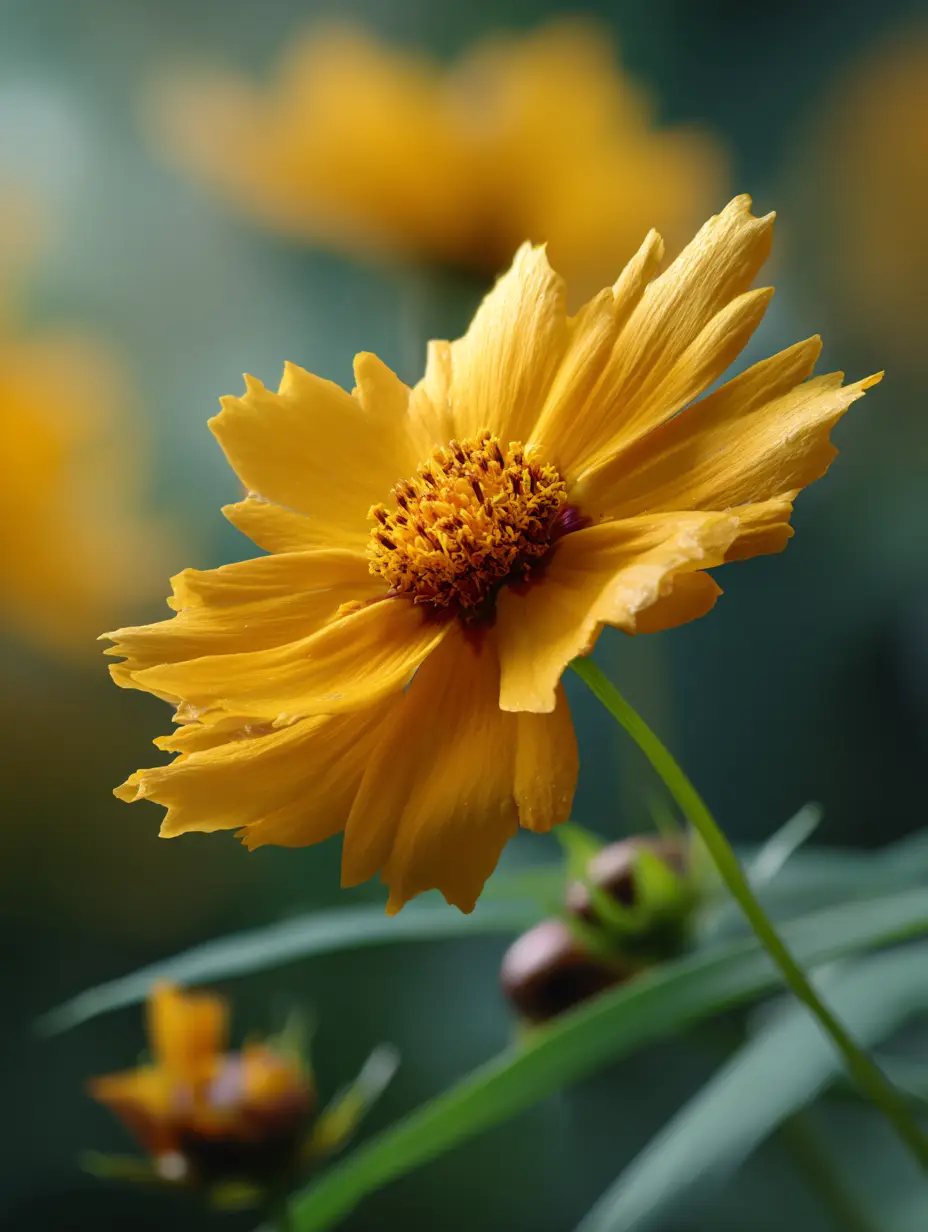
🌱 Taxonomy and origin
Coreopsis belongs to the sunflower family (Asteraceae), making it a relative of familiar blooms like sunflower and zinnias. There are dozens of Coreopsis species, with around 40 species formally recognized and as many as 80 described by botanists over time. All true coreopsis are native to North America, Central America, and South America, with several species widely found in the United States. The genus name comes from Greek words meaning “bug” and “appearance,” inspired by the small dry seeds that resemble ticks – hence the common name “tickseed.” Coreopsis plants evolved in sunny, open habitats such as prairies, grasslands, and savannas. Thanks to this origin, they are well adapted to warm climates and periodic droughts. Many species are perennial wildflowers, while some, like Coreopsis tinctoria (plains coreopsis), are annuals that readily reseed. As garden plants, coreopsis have been cultivated and hybridized extensively, spreading from their native range to flower beds across Europe and other continents as a symbol of cheerful, hardy beauty.
🌸 Bloom time
Coreopsis are prolific bloomers that light up the garden from late spring through late summer, often continuing into fall. The exact bloom time varies by species and region – some perennial types start flowering in late May or June, while annual varieties may begin in early summer. Once in bloom, coreopsis produces a flush of bright blossoms that can last for weeks. Many cultivars and species will rebloom or flower continuously if deadheaded regularly. Removing spent flowers encourages the plant to produce new buds instead of setting seed, thereby extending the blooming season. In favorable conditions, certain coreopsis (especially annual tickseeds) will keep flowering until the first frost. The classic coreopsis blossom is typically golden yellow with a contrasting central disk, giving the plant a quintessential sunny look. Breeders have also developed varieties with other colors; some feature two-tone petals with burgundy or red markings, and a few even display vibrant pink flowers or deep red flowers. Regardless of color, coreopsis blooms reliably during the long days of summer, providing a steady source of nectar for butterflies and a splash of bright color in the landscape for months on end.
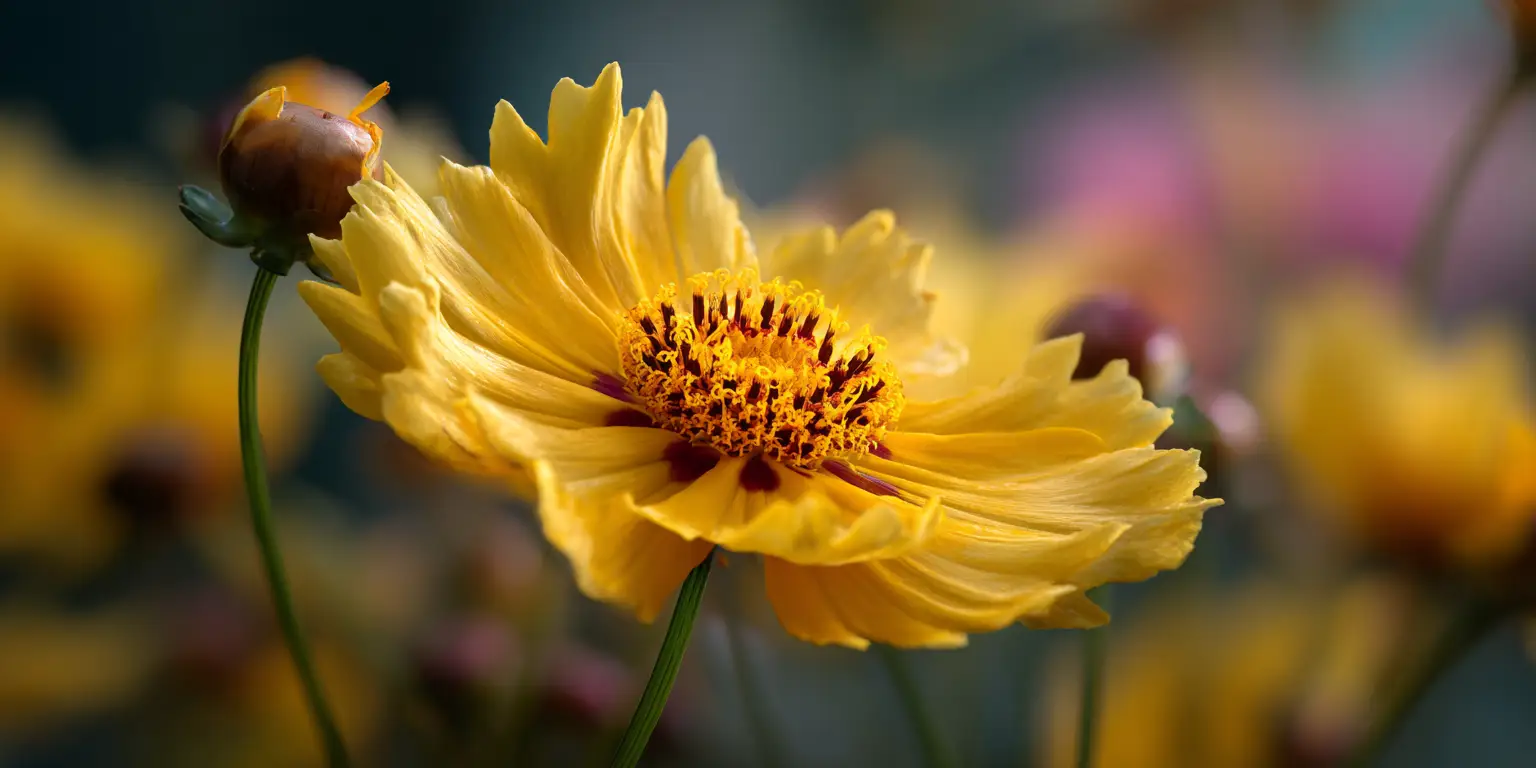
📏 Height and spread
Most coreopsis form upright, bushy clumps of moderate size. Typical garden varieties grow around 18 to 24 inches (45 to 60 cm) tall, with a similar spread of about 12 to 24 inches (30 to 60 cm). Dwarf cultivars may stay under 1 foot, while a few species, like tall tickseed (Coreopsis tripteris), can reach 3 to 4 feet in height. The plants branch to create mounded forms studded with multiple flower heads. Some types, such as threadleaf coreopsis, can slowly expand by rhizomes or self-seeding, but they are not invasive and spread at a modest pace. Stems are generally thin but sturdy, so these perennials usually do not require staking. Their medium height makes coreopsis a versatile choice that mixes well with other similarly sized flowers in beds and borders.
☀️ Light
As sun-loving prairie natives, coreopsis flowers grow best with plenty of sunlight. Full sun exposure (at least 6 to 8 hours of direct light per day) is ideal for robust growth and maximum blooming. In climates with intense summer heat, coreopsis can tolerate very light partial shade during the hottest part of the day, but too much shade will result in fewer blooms and leggy, stretched growth. When planted in a sunny location, coreopsis develops a compact, well-branched form and produces flowers abundantly. The bright rays of the sun help the buds open and encourage continuous flowering throughout the season. In shadier conditions, the plant may survive but likely won’t display its full floral potential. It is therefore best to choose an open site or garden bed with unobstructed sun. Coreopsis also performs well in containers placed on sunny patios or decks, as long as they receive ample light. Whether in a dedicated flower border, a wildflower field, or a container, providing strong sunlight ensures that coreopsis will live up to its reputation as a prolific bloomer in the summer garden.

💧 Water
Coreopsis is fairly low-maintenance when it comes to water needs, particularly once the plant is established. During the first growing season or after transplanting, moderate watering is important to help coreopsis establish a strong root system. The soil should be kept evenly moist (but not waterlogged) until new plants settle in. After that, coreopsis shows good drought tolerance and typically only needs watering during extended dry spells. These flowers prefer conditions on the drier side rather than sitting in soggy soil. Overwatering or poor drainage can lead to root rot and fungal problems, so it’s best to let the top inch of soil dry out between waterings. In most climates, normal rainfall is sufficient for mature plants, and supplemental watering is only necessary if weeks pass without rain. However, providing the plants an occasional deep drink in summer can support continuous blooming, as very dry conditions might cause the plant to conserve energy and flower less. Aim to water at the base of the plant to keep foliage dry, since wet leaves in humid weather can encourage mildew. In summary, coreopsis thrives with average watering: enough to prevent wilting during hot, dry weather, but generally quite forgiving of infrequent irrigation once it’s established.
🌍 Soil and pH
True to their resilient prairie heritage, coreopsis plants are not very fussy about soil. They do best in well-drained soil, as good drainage is key to preventing root diseases. A sandy or loamy soil type is ideal, but coreopsis can also grow in average garden soil and even poor, rocky substrates that many other ornamentals might struggle with. Heavy clay is one condition they don’t appreciate unless it has been amended to improve drainage. If planting in clay, mixing in compost or grit can help avoid waterlogged roots. In terms of fertility, coreopsis actually prefers moderate to low nutrient levels – extremely rich soil or excessive fertilization can lead to lush foliage with fewer blooms. As for pH, a neutral to slightly acidic range (approximately pH 6.0 to 7.0) is typically ideal, but this plant is adaptable and can tolerate soils a bit outside that range. Gardeners across different regions have success with coreopsis in soils varying from mildly acidic to slightly alkaline, as long as the soil doesn’t stay overly wet. Overall, the key soil requirement is simply that it be well-draining. Meeting that condition will let coreopsis develop healthy roots and produce its signature bright flowers profusely.
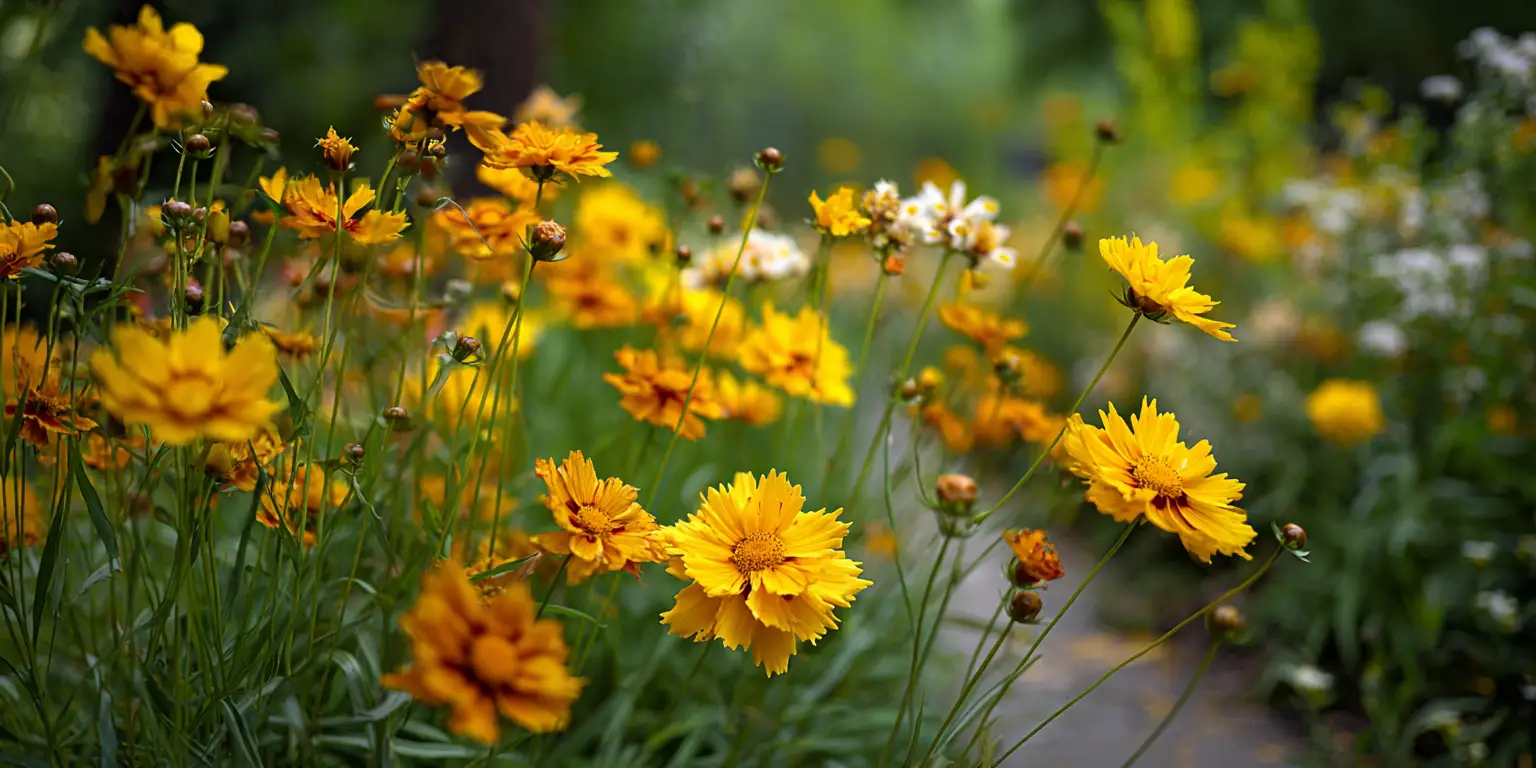
❄️ USDA hardiness
Most perennial coreopsis species are hardy in a broad range of climates, making them suitable for gardens throughout much of the United States. Depending on the species and cultivar, coreopsis perennials typically thrive in USDA Hardiness Zones 4 through 9, with certain hardy types surviving even colder winters. For example, lanceleaf and threadleaf coreopsis (among others) can handle winters as cold as Zone 3 by dying back to the ground and re-sprouting from the roots in spring. In contrast, many coreopsis also tolerate heat and humidity well, growing happily in Zones 8 and 9, and some varieties can even perennialize in mild Zone 10 regions.
Annual coreopsis (such as Coreopsis tinctoria) complete their life cycle in one season and can be grown in any zone where summers are warm. Even though frost will kill these annuals, they often reseed themselves for the next year. In regions colder than Zone 3, gardeners usually treat coreopsis as annuals or rely on reseeding, since perennial forms may not overwinter outdoors. In borderline zones, providing a layer of mulch over the root area in late fall can help marginally hardy coreopsis survive winter freezes. Generally, gardeners find coreopsis to be a reliable and tough plant across various climates – returning each year in suitable zones and withstanding both chilly winters and hot summers, as long as an appropriate species is chosen for the location.
🌼 Propagation and longevity
Coreopsis can be propagated in several ways, and its longevity in the garden can be extended with a little care. One of the simplest methods is growing coreopsis from seed. Many coreopsis species and hybrids produce viable seeds that can be collected in the fall or simply allowed to self-sow. Gardeners often start seeds indoors 6 to 8 weeks before the last spring frost, or direct-sow seeds outdoors after the danger of frost has passed. The seeds germinate readily in warm soil and bright light. By mid-summer, first-year seedlings of annual types will bloom, and perennial types started from seed usually flower by their second year.
Another common propagation method is division of established clumps. Perennial coreopsis is vigorous but often short-lived, typically at their best for about 3 to 5 years. As plants age and flowering wanes, digging up and splitting the clump can reinvigorate it. Division is best done in early spring or early fall. Each section with healthy roots and shoots can be replanted as a new plant, which renews the patch’s vigor. Regularly dividing every few years not only propagates more coreopsis but also extends the life of the planting. Even if an individual plant dies out, coreopsis tends to self-sow nearby. With occasional division and self-seeding, a coreopsis bed can effectively persist and bloom for many years.
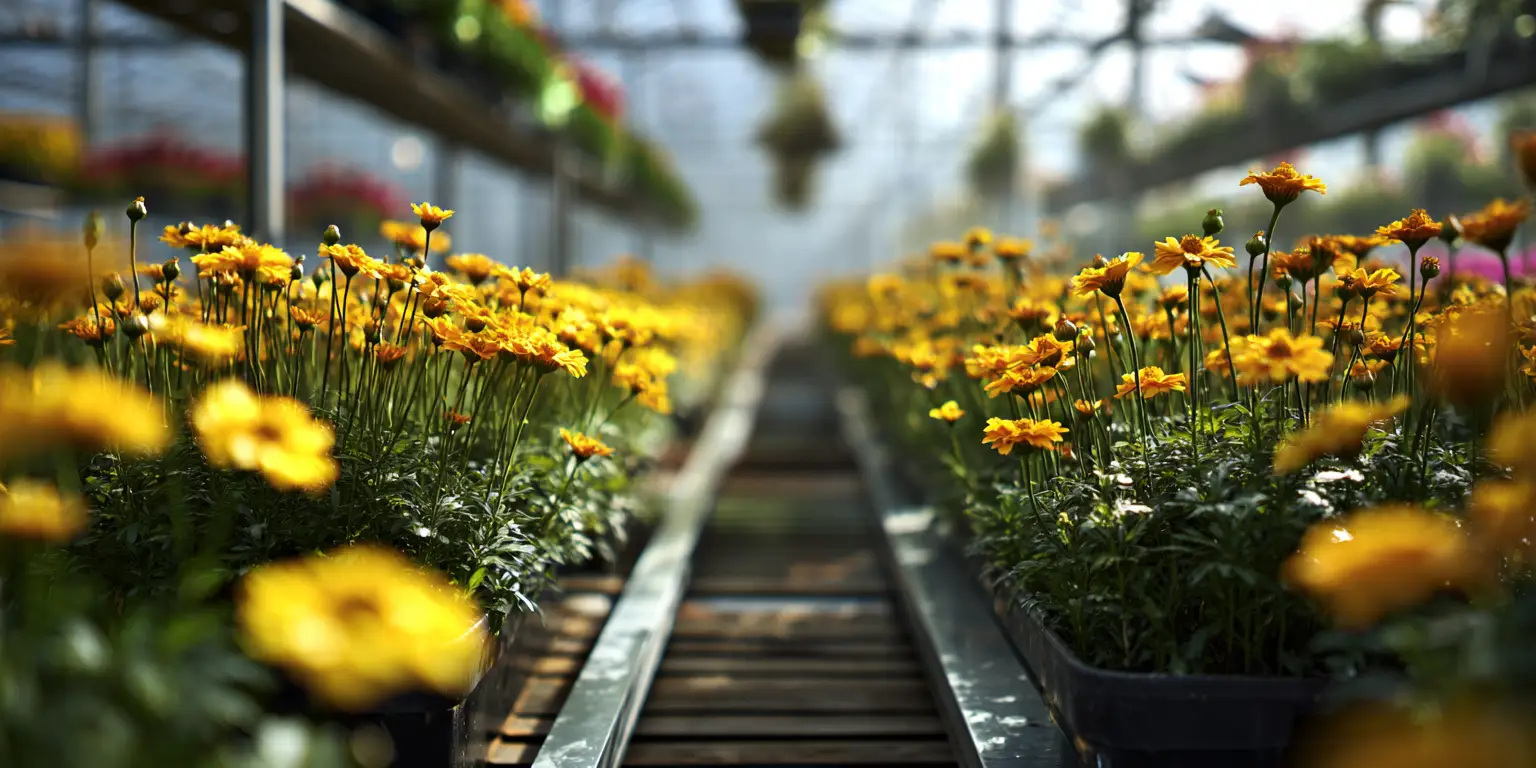
👃 Fragrance
Fragrance is not a major feature of coreopsis flowers. The blooms of coreopsis, while visually striking and bright, have little to no scent discernible to people. Unlike some garden flowers that perfume the air, a patch of coreopsis will not add fragrance to its list of attributes. This lack of floral scent is not a disadvantage for pollinators, however – bees and butterflies are drawn by the nectar and vivid colors rather than by smell. The plant’s appeal is largely visual. Some gardeners do note that the foliage of certain coreopsis varieties emits a mild scent when handled or crushed. For example, the leaves of threadleaf tickseed have been described as having a faint herbal or anise-like aroma, though this is subtle and usually only noticed up close. In general, one should not expect a strong perfume from coreopsis blossoms. If a fragrant flower bed is desired, coreopsis can be paired with other blooms that do offer scent (such as lavender or garden phlox) so that the overall garden has both color and fragrance. Essentially, coreopsis contributes brilliant visual appeal, while other plants can be chosen to provide perfume in a mixed planting.
⚠️ Toxicity and pet safety
Gardeners with pets and children can rest easy when planting coreopsis, as it is considered a non-toxic plant. All parts of coreopsis (tickseed) are generally safe and are not known to be poisonous to humans or common domestic animals. This means that if a curious cat or dog chews on a coreopsis stem or flower, it should not suffer any ill effects. The American Society for the Prevention of Cruelty to Animals (ASPCA) lists coreopsis as non-toxic to cats, dogs, and even horses. Similarly, there are no reports of the plant causing rashes or irritation from casual contact, so it is friendly for handling in the garden. In fact, coreopsis is sometimes recommended as a pet-safe alternative to more toxic ornamental flowers. While being non-toxic, coreopsis is also not particularly palatable – the foliage has a bitter or rough taste that tends to discourage animals from eating much of it. This trait, while making it deer-resistant, also means pets are unlikely to consume large quantities. In summary, coreopsis poses no poisoning hazard and can be confidently planted in yards where pets roam and children play. It offers a safe splash of color without the worry of toxicity found in some other garden plants.
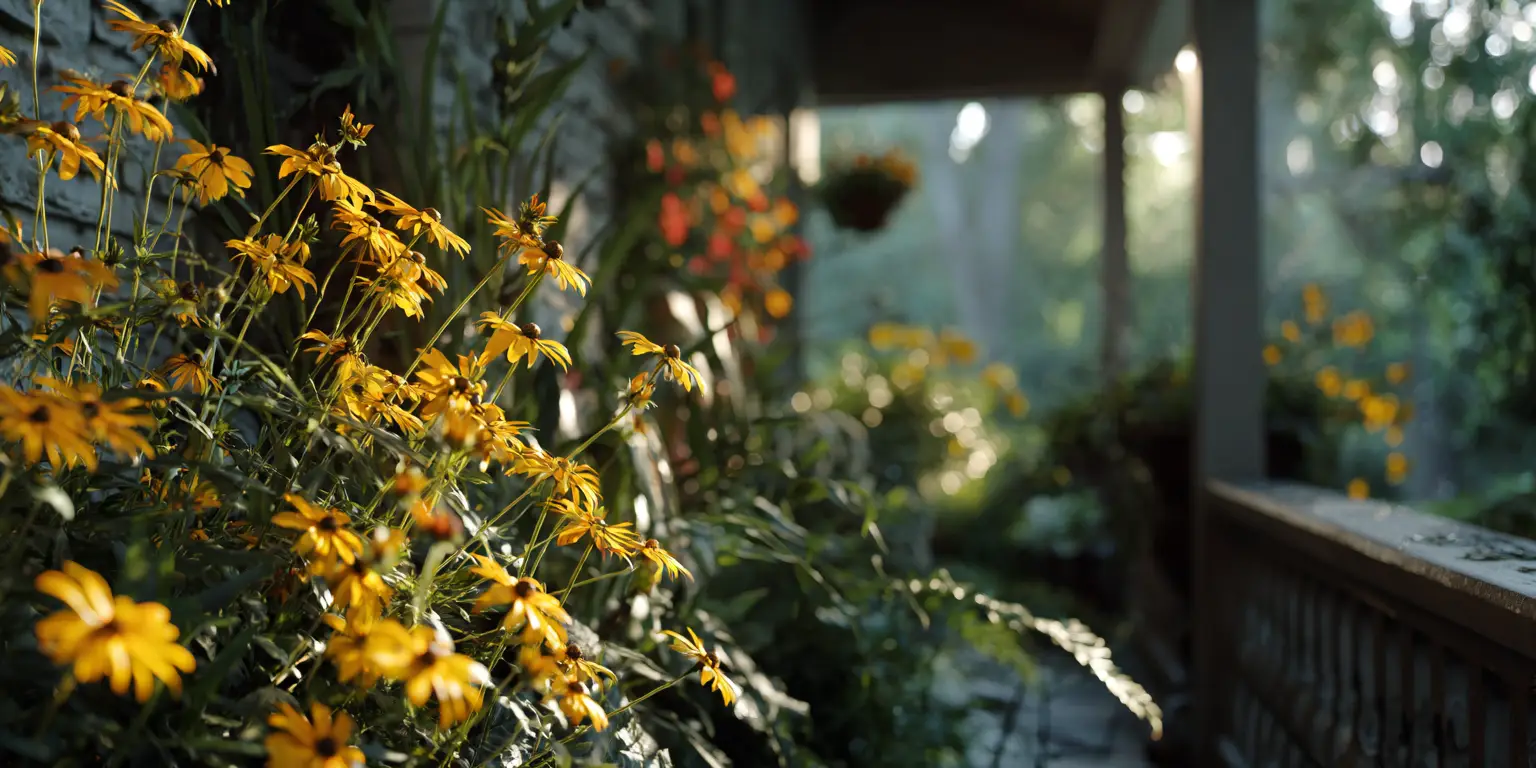
🌿 Vase life
Coreopsis can make a charming addition to casual summer bouquets, though its vase life is modest. When cut and placed in water, coreopsis flowers typically last around 5 to 7 days. For the longest vase life, it’s best to harvest the stems in the morning when the plants are well hydrated. Choose stems where about half to two-thirds of the flower heads are open and blooming, while others are still in bud – this way, some buds may continue to open in the vase, prolonging the display. Strip off any leaves that would sit below the water line in the vase to reduce bacterial growth. The thin, delicate petals of coreopsis blooms mean they can wilt or drop off after several days, especially in a warm indoor environment.
Using clean water and adding floral preservative can help extend their freshness by a couple of days. It’s also wise to change the water every day or two. Certain taller varieties with larger blooms, such as large-flowered tickseed (Coreopsis grandiflora), are often grown specifically for cut flowers and tend to hold up slightly better in arrangements than very small-flowered types. While coreopsis won’t last as long in an arrangement as some sturdier cut flowers, its bright, cheerful appearance makes it a lovely, if short-lived, accent in summer bouquets. Many gardeners enjoy cutting a few stems to bring that sunshine indoors, knowing they can always pick more a few days later from the continuously blooming plants outside.
🐛 Pests and diseases
Coreopsis is generally a trouble-free plant with minimal pest or disease issues, which is one reason it is so popular for low-maintenance gardens. In terms of pests, coreopsis foliage is seldom bothered by insects – the leaves have a somewhat tough texture and bitter taste that deter most leaf-chewing pests. Deer and rabbits usually leave coreopsis alone, finding other plants more appetizing, so tickseed is often labeled as deer-resistant. The most common pest issues are slugs or snails, which might nibble on young plants or lower leaves, especially in damp conditions. Aphids can sometimes cluster on tender growth or flower buds, but infestations are typically small and can be managed by rinsing them off or by natural predators taking care of them. Occasionally, Japanese beetles or other generalist insects might chew on the petals, but serious damage is rare.
As for diseases, the main challenges come from excess moisture and humidity. Powdery mildew (a white powdery fungal growth on leaves) and other fungal leaf spots can affect coreopsis if the weather is very humid or if plants are crowded with poor air circulation. These diseases might cause foliage to discolor or wilt. Ensuring good spacing, plenty of sun, and avoiding overhead watering helps prevent mildew issues. If mildew or leaf spot does appear, removing the affected foliage and applying a suitable fungicide can control it. Another potential issue is root rot, which can occur in waterlogged soil – again, well-drained soil is the best defense. In very rare cases, coreopsis (being in the aster family) could contract aster yellows, a disease that causes deformed growth, but this is uncommon. Overall, with proper planting conditions, coreopsis plants remain healthy and robust. They have a strong natural resistance to most problems and often flourish without any need for pesticides or special care, truly living up to their hardy, easy-care reputation.
FAQs
Is coreopsis an annual or perennial?
Coreopsis can be either annual or perennial, depending on the species. Many commonly grown coreopsis, such as large-flowered tickseed and threadleaf coreopsis, are perennials that return each year (especially in USDA Zones 4-9). These perennials often live for several years but may be somewhat short-lived, declining after 3-5 years if not divided and renewed. Other types, like Coreopsis tinctoria (also known as plains coreopsis), are annuals that complete their life cycle in one season. Annual coreopsis will readily self-sow seeds, so they can appear year after year even though the original plants do not survive the winter. In colder climates, gardeners sometimes grow perennial varieties as annuals if the plants are not winter-hardy in their zone. Overall, the genus includes both annual and perennial types – it is important to identify the specific kind to know whether it will survive winter or need replanting each year.
Should coreopsis be deadheaded?
Yes, deadheading coreopsis (removing the spent flowers) is beneficial to keep the plant blooming profusely. When gardeners snip off faded blooms, the plant is encouraged to produce additional rounds of flowers rather than putting energy into seed production. Coreopsis responds well to regular deadheading, often blooming continuously or in multiple flushes throughout summer as a result. If removing every individual spent bloom is too tedious, another approach is to shear back the entire plant by about one-third to one-half its height after the main wave of flowering. This kind of mid-season trim tidies the plant and frequently prompts a fresh set of blooms after a few weeks. Deadheading not only extends the flowering period but also keeps the plant’s appearance neat. On the other hand, leaving some seed heads on will allow coreopsis to set seed that can feed birds like goldfinches and also reseed itself in the garden. In summary, for the longest and fullest display of flowers, it is good practice to deadhead coreopsis regularly through the blooming season.
Do coreopsis plants spread or become invasive?
Coreopsis has a moderate spreading habit but is not considered invasive. Perennial clump-forming types will gradually expand in diameter over the years. Some, like threadleaf coreopsis, can spread by underground rhizomes, forming a larger mat or colony if left unchecked, but they typically do so at a manageable pace. Many coreopsis also drops seeds around the parent plant, leading to volunteer seedlings nearby the following season. These self-sown seedlings can be transplanted or left to grow, effectively allowing the plant to naturalize lightly in a flower bed. Despite these tendencies, coreopsis is easy to control. Unwanted seedlings can be pulled up, and clumps can be divided or edges trimmed if they grow beyond their space. The genus is not an aggressive invader – in fact, several coreopsis species are native wildflowers that coexist with other plants without overtaking them. They do not appear on invasive species lists. So, while a coreopsis patch may broaden or reseed over time, it will not run rampant or choke out other plants like a truly invasive species would. Gardeners generally find that any spreading is a welcome way to get more of these cheerful flowers, and it remains straightforward to manage their growth.
Are coreopsis flowers deer resistant?
Yes, coreopsis (tickseed) is generally considered deer resistant. Deer tend to dislike the taste and rough texture of coreopsis foliage and will usually pass it by in favor of other plants. The leaves often have a slightly bitter or aromatic quality, which makes them unappealing to grazing animals. As a result, in areas troubled by deer browsing, coreopsis can be a smart choice for adding color because it is less likely to be eaten. It’s important to note that “deer resistant” does not mean “deer proof” – a very hungry deer might sample almost any plant if food is scarce. However, as both gardening experience and extension service lists suggest, coreopsis is typically low on the menu for deer and also for rabbits. Many gardeners report that their coreopsis patches remain untouched even when other flowers get nibbled. This resistance, combined with the plant’s nectar-rich blooms for pollinators, makes coreopsis a valuable addition to wildlife-friendly gardens: it feeds the butterflies and bees, but not the deer.
How long do coreopsis plants live?
Individual coreopsis plants, particularly the perennial varieties, often have a lifespan of only several years (around 3 to 5 years of prime blooming). After a few years of vigorous flowering, a perennial coreopsis may start to thin out or produce fewer blooms as it ages. This is a common trait among many fast-growing perennials – they expend a lot of energy on prolific blooming early on, which can lead to a shorter lifespan. However, there are ways to keep coreopsis going in the garden for much longer. Regular division of the clumps every few years can rejuvenate the plant and essentially create “new” young plants that continue to thrive. Also, the propensity of coreopsis to self-seed helps maintain its presence; even if an older plant dies out, there are often new seedlings nearby that take its place. Annual coreopsis, by nature, lives only one season, but it drops plenty of seed that germinates the next spring, thus perpetuating itself. In practice, a well-maintained coreopsis bed can seem almost perpetual because of this renewal process. Gardeners who deadhead selectively or leave some seed heads will often find new volunteer plants emerging. So, while an individual coreopsis may not be very long-lived, the garden can have coreopsis blooming year after year through propagation and self-seeding.
Can coreopsis grow in pots or containers?
Yes, coreopsis can be successfully grown in pots and containers, provided its basic needs are met. A container that is at least 8 to 10 inches deep and wide is recommended for a single small coreopsis plant, with larger pots used for multiple plants. The pot should have good drainage holes, since coreopsis will not tolerate waterlogged soil. A lightweight, well-draining potting mix works best; incorporating some coarse sand or perlite can improve drainage further. Potted coreopsis should be placed in a location that receives plenty of sun (at least 6 hours a day), as they thrive with strong light. Water containers whenever the top inch of soil dries out, keeping in mind that potting mix dries out faster than ground soil, especially in summer heat. During the peak of summer, daily watering may be needed for smaller pots. In terms of feeding, coreopsis in pots will bloom through the summer if given basic care. They do not require heavy feeding; a diluted balanced liquid fertilizer once a month during the growing season is sufficient to support continuous flowering in the limited soil of a container. It is advisable to protect the pots in winter in cold climates, since roots in containers experience more extreme temperatures than those in the ground. Moving the pot to a sheltered spot or insulating it with mulch can help the plant survive the winter. With a sunny spot and regular care, coreopsis can thrive in a container and bring the same cheerful charm to patios or balconies as it does in the garden.
Interesting tips
- Plant coreopsis alongside blue flowers like sage or purple flowers such as lavender to create a striking color contrast. The bright yellow tones of coreopsis stand out vividly against cool blues and purples in a mixed border.
- Combine coreopsis with spring-blooming bulbs. As early flowers like tulips finish their display, coreopsis will be coming into bloom and can take over the show for the summer, ensuring continuous color in the garden.
- Coreopsis is an excellent pollinator plant: its blooms are a magnet for butterflies (such as skippers and sulphurs) and bees. After flowering, if you leave some seed heads to dry, the seeds will provide food for songbirds like finches.
- Avoid over-fertilizing coreopsis. Excess nutrients, particularly high nitrogen, can cause the plants to produce lush green growth at the expense of flowers. They actually bloom better in lean soil conditions, so feeding is rarely necessary.
- If coreopsis plants start to flop or get too tall, a mid-season pruning or shearing can help. Cutting back the plants by about half their height in early summer (after the first bloom flush) promotes bushier growth and often triggers a second wave of flowering later in the season.
- Save seeds from coreopsis plants in the fall by collecting the dried seed heads. These seeds can be dried and stored over winter, then sown the following spring to propagate additional plants or even shared with friends. This is a cost-effective way to expand a collection of these cheerful flowers, and it helps preserve any particularly beloved strains of coreopsis.